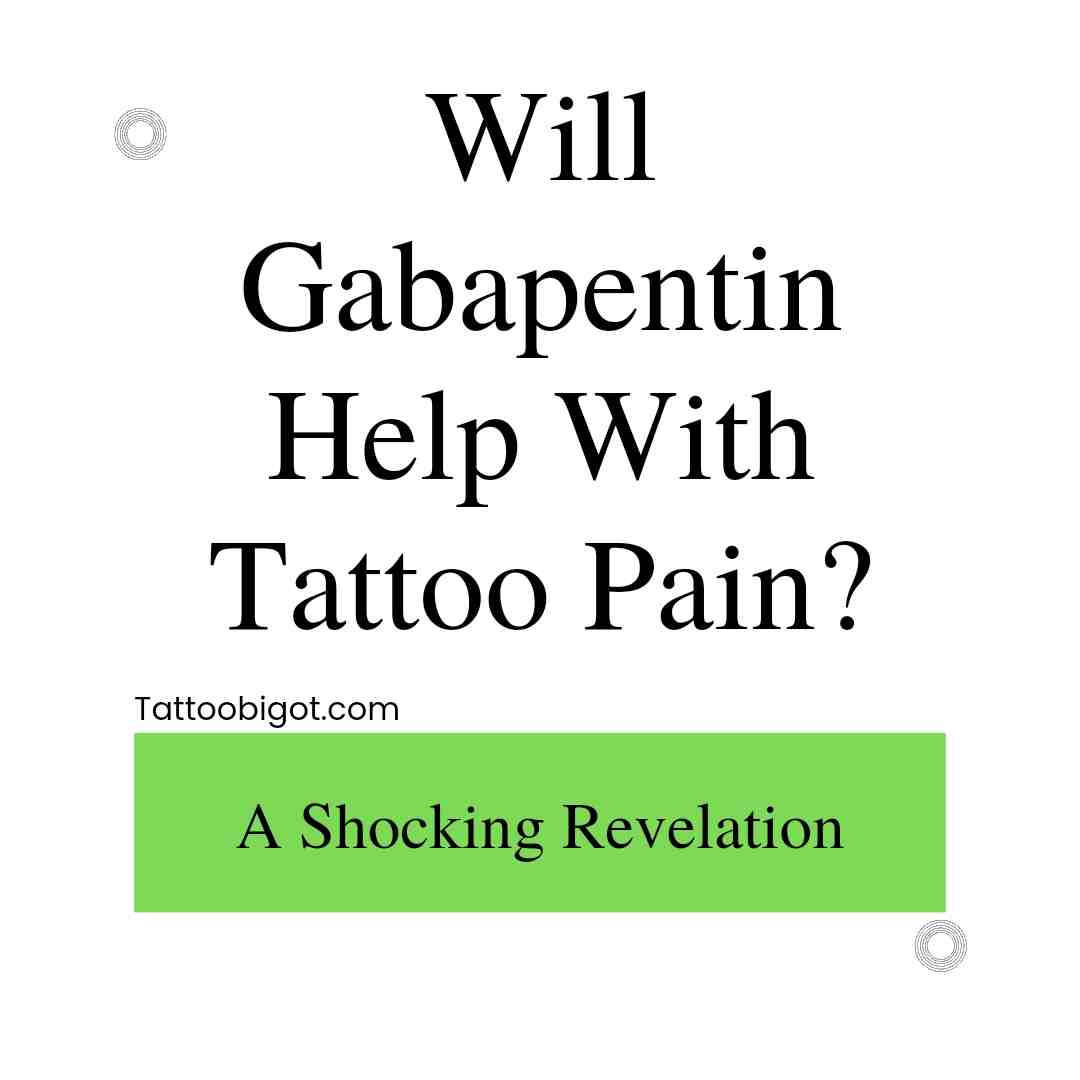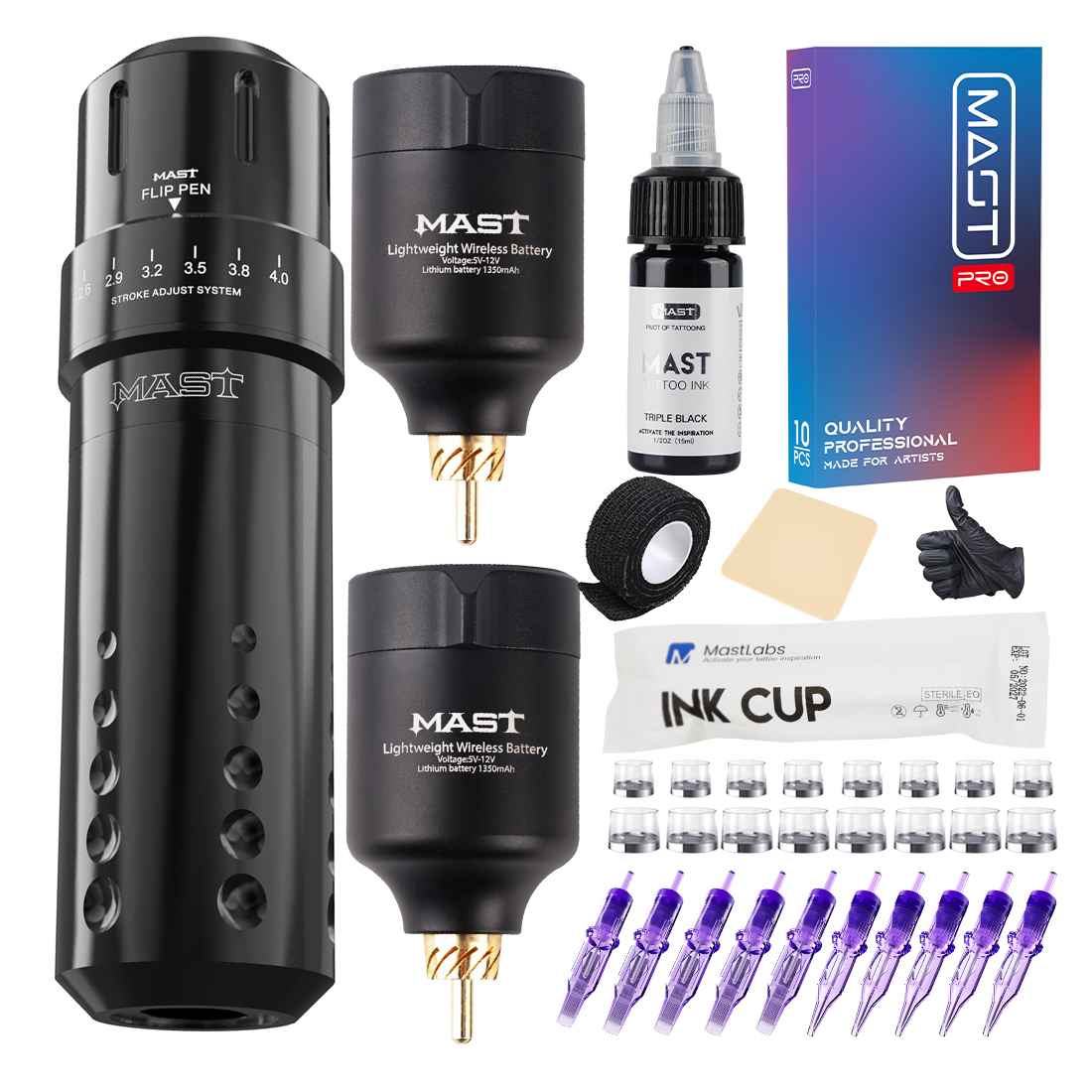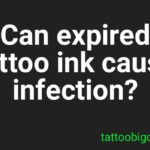Getting a tattoo can be an exciting experience, but the pain that comes with it may cause some people to hesitate.
Many wonder if there are ways to reduce the discomfort during the tattoo process. Some suggest using Gabapentin, but will Gabapentin help with tattoo pain?
Gabapentin is a medication that some believe can help minimize tattoo pain. In this comprehensive guide, we’ll explore the details of using Gabapentin for tattoo pain relief.
What is Gabapentin?
Gabapentin is a prescription medication primarily used to treat nerve pain related to conditions like fibromyalgia, diabetic neuropathy, shingles, and more. It’s sold under brand names like Neurontin, Gralise, and Horizant.
Gabapentin is an anticonvulsant, meaning it can help control seizures. But it also has analgesic or pain-relieving properties that make it useful for treating various types of chronic pain. It works by changing the way the body senses pain.
The medication comes in capsule, tablet, and oral solution forms. Dosages range from 100mg up to 800mg, taken up to three times per day. Common side effects can include dizziness, drowsiness, fatigue, blurred vision, and swelling of the hands and feet.
How Gabapentin May Help With Tattoo Pain
Research shows Gabapentin activates the release of neurotransmitters that inhibit pain pathways in the brain and spinal cord. By dulling pain signals to the brain, Gabapentin can reduce the sensation of pain from a new tattoo.
Studies have found the benefits of using Gabapentin for acute pain after surgeries. Since a tattoo session involves repetitive trauma to the skin from the tattoo needle, Gabapentin may work in a similar way to minimize this pain source.
The numbing effects usually kick in around 30-60 minutes after taking a dose. This corresponds well with the length of a standard tattoo appointment.
Overall, Gabapentin shows promise for managing the sharp pain felt during tattooing. It may provide an alternative to other analgesics like ibuprofen or prescription painkillers.
Also Read: Is Hawink Tattoo Ink Safe? A Close Look at Ingredients, Testing, and Long-Term Risks
Potential Risks and Side Effects of Using Gabapentin
Gabapentin does come with some potential side effects to be aware of:
- Dizziness, drowsiness, fatigue
- Blurred vision, double vision
- Difficulty concentrating, confusion
- Weight gain, fluid retention
- Dry mouth
- Difficulty sleeping
These side effects are usually mild but increase with higher dosages. Drowsiness and dizziness are the most common issues reported with Gabapentin. This can impact the ability to drive or operate machinery.
Misuse of Gabapentin can also lead to substance dependence in some individuals. It should only be taken exactly as prescribed by a doctor.
Those with kidney problems may need dose adjustments, as Gabapentin is eliminated through the kidneys. Discuss any kidney issues with your prescriber.
Always inform the tattoo artist if you’re taking any medication that may affect pain levels or cause drowsiness during the appointment. They can take extra care, knowing the Gabapentin may dull some of the discomfort.
Dosage Information
Proper gabapentin dosage for tattoo pain will depend on many individual factors. Always follow medical advice from your prescriber.
For reference, typical dosing ranges are:
- 300-600mg taken 30-60 minutes before tattoo appointment
- May repeat 300mg dose every 2-3 hours as needed
- Maximum daily doses up to 1,800mg daily, usually divided into 3 doses
Lower doses, around 300-400mg, are often sufficient to provide some pain relief. The effects will vary from person to person, though.
It’s crucial to take Gabapentin exactly as directed by your provider. Too high of a dose can increase side effects. Staggering smaller doses helps maintain stable levels for better pain control.
Also Read: Is Hawink Tattoo Ink Good? An In-Depth Look at Quality, Safety, and Reviews
Other Pain Management Options
Gabapentin is just one option to help make tattoo pain more tolerable. Many other techniques and medications can help as well:
– Over-the-counter analgesics – Non-steroidal anti-inflammatory drugs like ibuprofen (Advil) or acetaminophen (Tylenol) are go-to options for mild tattoo pain relief.
– Prescription painkillers – Some artists may offer stronger prescription opioids for pain control. Use these cautiously due to the risks of dependency.
– Topical anesthetics – Numbing creams with lidocaine are applied before appointments to block pain signals. Common examples are Emla cream or LMX.
– Ice packs – Applying ice to the tattoo area can numb the skin slightly before and after the session.
– Distraction techniques – Listening to music, watching videos, or focusing on breathing/meditation helps divert attention from the discomfort.
A combination approach often works best. Be sure to communicate with your artist so you can collaborate on the most effective pain management plan.
Getting a Gabapentin Prescription
Because Gabapentin is a controlled substance, you’ll need a prescription from a licensed healthcare provider. The easiest option is to make an appointment with your regular doctor or pain management specialist. Explain your interest in trying Gabapentin for upcoming tattoo sessions.
If you don’t already have a provider, walk-in clinics and urgent care centers can often prescribe Gabapentin as well. You may also find medical spas or plastic surgeon offices willing to prescribe it prior to cosmetic tattoo procedures.
Online telemedicine visits are another convenient way to consult with a doctor. They can evaluate your health, explain the risks and benefits, and electronically prescribe Gabapentin if appropriate.
Be prepared to share your medical history and any conditions or medications you currently take. Providers will want to assess the overall risks before prescribing Gabapentin.
Also Read: Can I Use Jergens on My Tattoo? Exploring the Safety and Effects
Taking Gabapentin Safely for Tattoos
If you and your doctor decide Gabapentin is a good option for tattoo pain control, keep these safety tips in mind:
- Take the exact dose prescribed at the proper times. Do not increase dosage or frequency.
- Avoid alcohol and other substances that cause drowsiness.
- Have someone drive you to your appointment and back home afterward.
- Inform the artist you are taking Gabapentin so they can monitor any side effects.
- Stay well hydrated before and after the session.
- Follow up with your doctor about ongoing use if needed for additional sessions.
- Seek medical help right away for worrisome reactions like breathing problems.
Carefully following usage instructions reduces the risks when using Gabapentin. Report any unusual side effects or concerns to your healthcare provider.
Also Read: Can I Use CeraVe Face Wash on My Tattoo? Find Out the Alarming Truth
Weighing the Pros and Cons of Gabapentin for Tattoos
Gabapentin can potentially make tattoo sessions more comfortable and tolerable. However, the medication does come with some drawbacks to consider as well.
Potential benefits:
- Reduces sharp pain from tattoo needle
- Alternative to opioids for pain relief
- Convenient dosing around appointment times
- May allow longer sessions if the pain is decreased
Potential risks:
- Side effects like dizziness, drowsiness
- Safety concerns around driving or operating equipment
- Possibility of dependence with long-term use
- It is not guaranteed to work effectively for all users
- Requires prescription and medical oversight
Talk over the pros and cons with your healthcare provider when deciding if Gabapentin is the right choice for your situation. Other alternatives may be better depending on your health history, pain levels, and personal preferences.
Note: You can also check out Gabapentin guidebooks to get more knowledge about Gabapentin usage and general information.
Also Read: Is Dermasil Good for Tattoos? Analyzing Effectiveness and Safety
Conclusion: Will Gabapentin Help With Tattoo Pain?
So, will Gabapentin help with tattoo pain? Gabapentin offers a scientifically-backed option for controlling the considerable pain that comes with getting tattooed. By prescribing an appropriate dose and timing, doctors can help patients better tolerate the discomfort during ink sessions.
However, Gabapentin is not appropriate for everyone. Individual factors, from medical conditions to risk of substance misuse, must be taken into account. Starting with lower doses and closely monitoring side effects is crucial for safety.
If given under proper medical supervision, Gabapentin can be an effective aid for managing tattoo pain. But other alternatives like topical anesthetics, ice, over-the-counter analgesics, and pain control techniques may also be considered. Finding the right pain relief approach takes some trial and error tailored to each person.
By understanding the benefits and risks of Gabapentin for tattoos, you can have an informed discussion with your healthcare provider. Together, you can decide if this medication is a reasonable option as you get ready to start your body art.
Frequently Asked Questions
How much Gabapentin should I take before a tattoo?
Typical dosing ranges from 300-600mg about 30-60 minutes prior to a tattoo appointment. Follow prescribing instructions from your doctor. Do not exceed 1,800mg total daily.
How long does gabapentin numbness last?
Effects kick in 30-60 minutes after taking a dose and can last for several hours. Timeframe varies by the individual and dosage amount.
Can I drive after taking Gabapentin?
No, Gabapentin can cause dizziness and drowsiness that impairs driving ability. Have someone else drive you to and from your tattoo session.
Does Gabapentin completely numb tattoo pain?
It reduces and dulls pain but does not necessarily eliminate it. Results vary from person to person. Other numbing techniques may be needed in addition to Gabapentin.
Is Gabapentin addictive if I use it for tattoo pain?
Any medication carries a risk of dependence with improper use. Taking Gabapentin exactly as prescribed helps avoid risks of misuse or addiction.
Can I drink alcohol while taking Gabapentin for a tattoo?
No, combining Gabapentin and alcohol increases side effects like drowsiness. Always avoid alcohol when taking prescription medications.
What side effects should I watch for with Gabapentin?
Common side effects include dizziness, drowsiness, blurred vision, dry mouth, and swelling in the hands/feet. Report any worrisome or severe reactions to your doctor promptly.
How often can I use Gabapentin for tattoo pain?
Do not use Gabapentin more frequently than prescribed by your provider. It is meant for occasional pain relief, not regular daily use. Extended use requires medical oversight.
Is Gabapentin safe for everyone getting tattooed?
No, individuals with kidney impairment, a history of substance abuse, or certain medical conditions may not be good candidates. Your doctor will assess risks before prescribing.
Can I take ibuprofen and Gabapentin together for my tattoo?
Yes, combining Gabapentin with an NSAID like ibuprofen may offer better pain relief than either alone. But let your doctor know about all the medications you’re taking.






